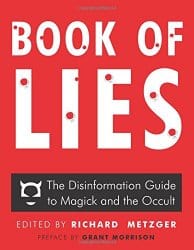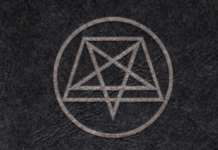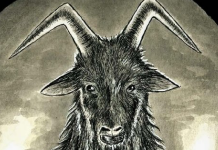
 The Book of Lies: The Disinformation Guide to Magick and the Occult, edited by Richard Metzger
The Book of Lies: The Disinformation Guide to Magick and the Occult, edited by Richard Metzger
Disinformation, 9781938875106, 352 pp., 2004, 2014
I don’t know about you, but when I hear the word “grimoire,” I think of dusty old tomes full of alchemical esoterica and glyphs in some cobwebbed book shoppe that smells of sandalwood, possibly helmed by a bearded man in a fez.
The Book of Lies, from the legendary Disinformation imprint, is a grimoire for the 21st century. It breaks the carbonite stasis of this kind of outmoded thinking, and zooms into the present. It’s a wonderful primer on postmodern magick, broken up into sections, from Magick in Theory and Practice, to Occult Icons to Scarlet Women, Secret Societies, as well as a section dedicated solely to the 20th century’s most infamous mage, Aleister Crowley. The Book of Lies is comprised of 40 essays from some of the occult underground’s leading lights, including Invisibles‘ author Grant Morrison; tryptamine consciousness from Terence McKenna; Throbbing Gristle and Psychic TV alien Genesis P-Orridge; to leading chaote Phil Hine; biblical apocrypha from Boyd Rice; and anarchist activist Hakim Bey (Peter Lamborn Wilson).
The Book of Lies contains everything you need to get caught up on the magical developments of the last 150 years, from drugs and aliens, pop magick and sigilization, the mimetic nature of the digital world, and the remix as subliminal sorcery. It’s nice to see so many different topics rubbing up against each other, and in such an attractive cherry red tome. You can get from the secret roots of the witchcraft revival as started by Gerald Gardner, to Jim Morrison as prehistoric shaman within 16 pages.
Chances are if you have been interested in magick and the occult in the last 20 years, you will have encountered at least some of these topics before. We’ve watched William Burroughs rub out the written word and reveal the subconscious spirit. We’ve ejaculated on sigils, and drooled over Morrison’s head-bending comics. We’ve tripped out with Timothy Leary and Terrence McKenna. We’ve conjured the devil, and all his infernal minions, with Anton LaVey and the Church of Satan. But some material I was less familiar with. For instance, I didn’t know about Jack Parsons, who was a disciple of Aleister Crowley, who went on to become an influential rocket scientist making great contributions to the space race, before dying in a suspicious laboratory explosion at the age of 37. When you start to realize that occult ideologies played a significant role in 20th century history, then things start to get really good.
Similar questions were raised with the essay “The Secret History of Modern Witchcraft,” by Tau Allen Greenfield, which is related in a moving first-person narrative. Greenfield investigates Gerald Gardner’s ties to Aleister Crowley, who made Gardner the English head of the Ordo Templi Orientis, although some think he may have been coerced into doing so, and speculating that the religion that we now know as Wicca is actually just a disguised form of Thelema. The perceptual shift makes it look as if there was some magical cabal at work, and Crowley and Gardner were actively conspiring to recruit people who might be turned off by the high occultism and diabolical ties of the OTO. Greenfield’s essay also points out a number of similarities between Thelema and Wicca, which helps to seal the rifts between the opposing ideologies.
It is moving and delightful to read Genesis P-Orridge’s account of William S. Burroughs and Brion Gysin, speaking poetically about his/her relationship to their artistic techniques, and the ways it influenced P-Orridge’s art. Gen met Burroughs and Gysin on numerous occasions, and it is a treat to hear him/her sprinkle the theoretical texts with anecdotes and insider insight.
My favourite section, and the one I found most informative, thought-provoking and useful, was the section on Scarlet Women: influential women occultists, and the roles they played. There’s essays on the fascinating Marjorie Cameron, Jack Parsons cohort, and star of Kenneth Anger‘s films; Ida Craddock, lover of angels and writer of marital manuals in the late 1800s, who comes across as an early martyr for sexual liberation; and the animalistic paintings of Rosaleen Norton, Pan’s daughter. Too often, women are relegated to the role of sidekick or stage prop in occultism, totally overlooking the fact that women have some of the highest roles in both Crowley’s system, with the Scarlet Woman and the Whore of Babalon, ushering in the new Aeon, as well as in witchcraft. I feel these essays, and these amazing and talented women, strike a major blow in considering women’s roles in the shifting paradigm.
Another favourite was Phil Hine’s “Are You Illuminated,” an initiatory primer. With organizations breaking down, and continuing to diminish, fewer and fewer magicians are moving through organized magical systems like the Golden Dawn or the OTO, which can make it hard to gauge progress, as well as understand what in the hell is happening to you. Hine’s essay is one of the most useful instruction manuals in the entire collection.
Boyd Rice’s account of Dagon, and the role of fish deities in mythology as teachers and bringers of enlightenment was particularly enjoyable. Rice’s work is probably the most striking scholastic achievement in The Book of Lies, thick and dense with literary allusions, and frighteningly, almost obsessively researched. Rice seems to be postulating a literal influence of fish people, possibly some Atlantean remnants, in instigating our current society. It’s a pretty far out notion, but he argues his case well, and really makes you wonder. It is that wondering where the power of this book lies. The world around you goes from being flat, finite, and defined, to being a cloud of wonder and mystery, opening your eyes and ask, “What’s going on?”
We must remember that the word occult means “hidden”. For most of history, these thoughts, these movements, have been brutally repressed, forcing the truth underground, to be veiled in secrecy and hidden in symbols. This repression began to lose its foothold with the fin de siecle 20th century, right alongside the growth and prevalence of broadcast media and information technology. We are living in an occult world. We are surrounded by esoteric symbolism everywhere. Black magician marketers are striving for your soul. We speak in hypersigils and virulent mimesis every day on Twitter and Facebook. We are all reality programmers and thought hackers. It is important that we understand, clearly and fully, where we’re coming from, to help steer the ship and understand where we’re going.
The essays are reasonably short, and you can typically read one or two in a sitting. The attractive, lavishly illustrated and exquisitely designed document transforms a bus ride or an evening bath into an act of magical dedication, a re-affirmation of your path. A grimoire or any magical text’s main usefulness is in leading the magician to practice magick. Everything else is academic, and while intellectual pursuits can be fun and interesting, that is not real magick.
The Book of Lies casts a clear light on the world we’re living in, equipping the modern mage with all the necessary armaments to grow gills and breathe in this new illuminated world.








